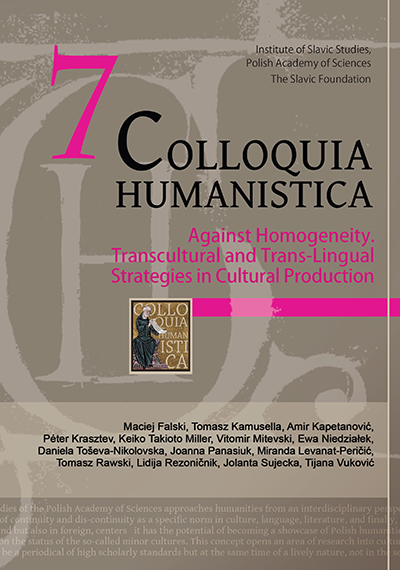Kūkai as an Enlightened Trans-culturalist: Reweaving Cultural Threads from the Universal Womb in This Life
Kūkai as an Enlightened Trans-culturalist: Reweaving Cultural Threads from the Universal Womb in This Life
Author(s): Keiko Takioto MillerSubject(s): Anthropology, Recent History (1900 till today), Theology and Religion, Semantics, 6th to 12th Centuries
Published by: Instytut Slawistyki Polskiej Akademii Nauk
Keywords: hiragana/kana; operative; suchness; co-origination; inter-subjective; dharma;
Summary/Abstract: Trans-culturality presupposes an existential crisis even at one’s so-called zenith of success. It summons its bearer to dare take a vertical fall into a wormhole whereby any excess materiality validating one’s identity becomes undone. In fact, in the afermath of this very bodily constraint, one can arrive at an evolutionarily critical threshold of clarity towards liberation. No longer measurable by convention, this realm is at once simple and profound as nature itself. That Kūkai 空海 (a.k.a. Kōbo Daishi), the 9th-century Japanese Buddhist monk, invented the Japanese syllabary hiragana remains an academic debate to this day, and may remain so as long as we continue to cling discursively onto this horizontality. However, in this essay, the author contends that the answer to this puzzle may be revealed to us when we recognize him as a trans-culturalist-in the-making, owing not only to the unique sets of situations he had encountered both at home and abroad in his time, but more importantly how he responded to them. That is, when we regard “his invention” beyond its simplistic renderings of Japanese phonemes, they begin to reveal themselves as a natural byproduct of his primary search—the threshold of the original transmission of Esoteric Buddhism. It suggests that the path of his spiritual quest, which also questions the health of one’s culture, is inherently intertwined with semantics. Publicly he had envisioned that his new government should help Japan re-orient itself as an authentic culture rather than to continue emulating the prestigious foreign Tang model. Personally he was in search of a method which would help one to attain enlightenment as Kūkai had thought would be possible in this very life. Yet, his transcultural journey would lead him to the sacred linguistic realm. Accordingly, the author is not hesitant to assume that Kūkai, as a trans-culturalist, may have chosen anonymity. That is, if he had indeed sown the seed of sustainability for Japanese culture among his people linguistically through the kana syllabary and ritually through the dharma operative embodied by its emperors, it was enough for Kūkai that his legacy should live on namelessly. In this sense, the Zen koan message uttered by Linji Yixuan, “If you meet the Buddha on the road, kill him,” fts how Kūkai lived. Thus posited, this essay will elucidate Kūkai’s transcultural footing leading up to “his” invention of kana syllabary. It will rely on the language of phenomenology, which emerged in the early 20th-century West at the developing phase of the East West cultural intercourse. Unlike the discursive Cartesian approach to categorize the East as “mysterious,” it allows its bearer to use the Western language while empowering him/her to elucidate the “structural invisible” inherent in the Eastern rhetoric as a powerful ontological partner, however ambiguously. The much-suppressed bodily existence, which has nonetheless surfaced as expressions of the dark “otherness” now joins the mind as an egalitarian co-catalyst. Together they will help unravel the truth’s operative at its dynamic nexus. A trans-culturalist is the truth’s sustainer, like a seed free keeper of old. In this spirit the essay celebrates a trans-chronologically realized moment of multiple transcultural experiences whose time has come. It honors the primordial operative, which when allowed to presence itself inter-subjectively to our consciousness, reverberates at the nature-human threshold. The final tribute paid to the 10th-century Japanese male writer Ki no Tsurayuki’s work Tosa Diary is not only a direct response to Kūkai’s lingua-cultural legacy, but also an indirect one to his original inquiry— Could one become enlightened in this very life?
Journal: Colloquia Humanistica
- Issue Year: 2018
- Issue No: 7
- Page Range: 53-81
- Page Count: 29
- Language: English

